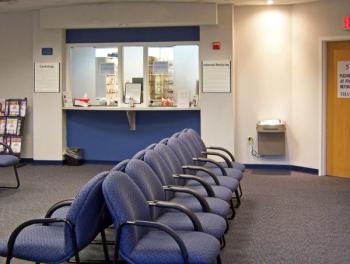
Expanding medicine beyond physicians' office walls
Growing acceptance of telemedicine is paving the way for technology to burst into the mainstream.
Key Points
The very first phone call ultimately paved the way for telemedicine of the future.
Telemedicine also is about expanding the reach of information, far beyond the walls of physician offices and health facilities. Telemedicine was first used more than 40 years ago by hospitals caring for patients in remote areas. Today, telemedicine programs exist in all 50 states, with services provided in 35 to 40 subspecialties. The technology is used by physician offices, correctional facilities, schools, daycare centers, hospitals, home health agencies, and even individuals in their homes and workplaces, according to Karen S. Rheuban, MD, immediate past president of the not-for-profit American Telemedicine Association (ATA). Factors such as the physician shortage, access to healthcare for more people due to healthcare reform, and the growing acceptance of telemedicine by insurance companies are paving the way for the technology to burst into the mainstream.
DEFINING PRINCIPLES
The terms telemedicine and telehealth often are used interchangeably, with both referring to remote delivery of healthcare services using technology, such as consultations between primary care physicians, specialists, and/or patients via videoconferencing (live, interactive video), the transmission of clinical still images (for instance, x-rays), e-health patient service sites that provide direct patient care, and remote monitoring or patient uploads of vital signs/stats, according to the ATA. More broadly defined, telehealth may refer to continuing medical education conducted online, the use of consumer-focused wireless applications and nursing call centers, or the delivery of healthcare via email or wireless phones.
The Health Resources and Services Administration (HRSA), an agency of the U.S. Department of Health and Human Services (HHS), focuses on improving access to healthcare services for people who are uninsured, isolated, or medically vulnerable.
HRSA defines telehealth as "the use of electronic information and telecommunications technologies to support long-distance clinical healthcare, patient and professional health-related education, public health, and health administration."
A POSSIBLE PANACEA?
A PricewaterhouseCoopers survey predicts that greater access to health coverage likely will clog the healthcare system until new care delivery models are created, including telehealth appointments. And consumers appear willing to jump on board, with 50 percent of survey respondents indicating that they would be willing to replace a face-to-face non-emergency visit with an online encounter with a physician.
Rheuban says, for example, that telemedicine can be instrumental in reducing stroke complications-one of the most burdensome and costly illnesses to the healthcare system. Physicians in small, rural hospitals can connect with a neurologist remotely to review a patient's symptoms and make a decision on delivering clot-busting therapies.
"Telemedicine is an amazing tool for that," she says. "It saves lives and is a compelling argument for cost savings."
Studies have shown that telemedicine can reduce the cost of healthcare by increasing efficiencies, including the management of chronic diseases, shared healthcare professional staffing, reduced or eliminated travel times, and fewer or shorter hospital stays, according to the ATA.
Newsletter
Stay informed and empowered with Medical Economics enewsletter, delivering expert insights, financial strategies, practice management tips and technology trends — tailored for today’s physicians.















